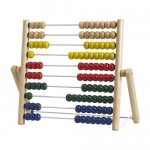In the last couple of weeks I’ve spoken in-depth about the importance of focusing on what fits as opposed to focusing on what’s right.In other words, paying attention to what works for you as opposed to the specific reasons why different approaches MIGHT work.I guess another way of looking at is ‘application’ vs ‘theory’.As an example, Eat Stop Eat is the right ‘fit’ for me. Fasting once or twice a week for 24 (ish) hours works well FOR ME. It has worked for me for over 7 years and I’m guessing it will continue to work for me in the foreseeable future. Eat Stop Eat is what ‘fits’.Now, I could get easily get tangled up in how Eat Stop Eat is RIGHT.Maybe it’s the carbs. After all, I do go 24 hours twice a week where I have virtually no dietary glucose load.
Excerpt from:









 For now classes are 6pm and 640pm at 2840 Wildwood st in the Boise Cloggers studio.
Book your class NOW!
click this ==>
For now classes are 6pm and 640pm at 2840 Wildwood st in the Boise Cloggers studio.
Book your class NOW!
click this ==>








